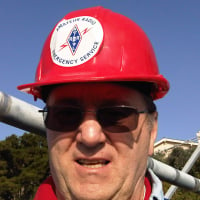Welcome to the new FlexRadio Community! Please review the new Community Rules and other important new Community information on the Message Board.
Need the latest SmartSDR, Power Genius, Tuner Genius and Antenna Genius Software?
SmartSDR v3.7.4 and the SmartSDR v3.7.4 Release Notes | SmartSDR v2.12.1 and the SmartSDR v2.12.1 Release Notes
SmartSDR v1.12.1 and the SmartSDR v1.12.1 Release Notes
Power Genius XL Utility v3.8.8 and the Power Genius XL Release Notes v3.8.8
Tuner Genius XL Utility v1.2.11 and the Tuner Genius XL Release Notes v1.2.11
Antenna Genius Utility v4.1.8
SmartSDR v3.7.4 and the SmartSDR v3.7.4 Release Notes | SmartSDR v2.12.1 and the SmartSDR v2.12.1 Release Notes
SmartSDR v1.12.1 and the SmartSDR v1.12.1 Release Notes
Power Genius XL Utility v3.8.8 and the Power Genius XL Release Notes v3.8.8
Tuner Genius XL Utility v1.2.11 and the Tuner Genius XL Release Notes v1.2.11
Antenna Genius Utility v4.1.8
If you are having a problem, please refer to the product documentation or check the Help Center for known solutions.
Need technical support from FlexRadio? It's as simple as Creating a HelpDesk ticket.
Need technical support from FlexRadio? It's as simple as Creating a HelpDesk ticket.
S Meter Reading after Service
Options
Joseph Rodick
Member
My Open Response to Flex Service Survey
The service agent was great in communication via email on the updated on my repair and also showed concern on the care and treatment of my transceiver. I would give that person a 10. "However, my S meter problem is still NOT fixed." I have spent the time reading all the back posts dealing with S meter readings, and I join the group in frustration that you seem to want to re-create the whole purpose for the readings, rather than fixing the issue. So, in the future do to my Flex, with or without an antenna connected or pre-amp on or off, RF/AGCT turned off or full, the S meter readings remain 5-6 plus at ALL times. I will report back to all my contacts that, SINCE I have a FLEX radio I am UNABLE to give you even a close, approximate, true reading of your signal level.
The service agent was great in communication via email on the updated on my repair and also showed concern on the care and treatment of my transceiver. I would give that person a 10. "However, my S meter problem is still NOT fixed." I have spent the time reading all the back posts dealing with S meter readings, and I join the group in frustration that you seem to want to re-create the whole purpose for the readings, rather than fixing the issue. So, in the future do to my Flex, with or without an antenna connected or pre-amp on or off, RF/AGCT turned off or full, the S meter readings remain 5-6 plus at ALL times. I will report back to all my contacts that, SINCE I have a FLEX radio I am UNABLE to give you even a close, approximate, true reading of your signal level.
1
Comments
-
 Mike-VA3MW Administrator, FlexRadio Employee, Community Manager, Super Elmer, Moderator adminOptionsHi Joseph
Mike-VA3MW Administrator, FlexRadio Employee, Community Manager, Super Elmer, Moderator adminOptionsHi Joseph
When you set your bandwidth to 250 and 50 Hz, what does the S meter read when connected to a Dummy Load?
Is it still S5-S6?
Mike
0 -
When I go to CW and reduce the bandwidth the S meter drops about one S unit. When I "short out" the antenna input I still show the same 5-6.
1 -
My S-meter does the same thing. Dummy load, S-7.0
-
 Mike-VA3MW Administrator, FlexRadio Employee, Community Manager, Super Elmer, Moderator adminOptionsSo, at 50 HZ bandwidth you see about S4?0
Mike-VA3MW Administrator, FlexRadio Employee, Community Manager, Super Elmer, Moderator adminOptionsSo, at 50 HZ bandwidth you see about S4?0 -
between 4-4.5 with the antenna connected or SHORTED.0
-
Just did a complete reset, at 50 HZ, the S meter is now reading 2.8-3 with or without the antenna connected or even with the antenna input shorted. However SSB still at 5-6 and CW at 250 HZ 4-4.5.0
-
 Mike-VA3MW Administrator, FlexRadio Employee, Community Manager, Super Elmer, Moderator adminOptionsPlease review this conversation
Mike-VA3MW Administrator, FlexRadio Employee, Community Manager, Super Elmer, Moderator adminOptionsPlease review this conversation
https://community.flexradio.com/flexradio/topics/6600-noise-levels-10db-higher-on-my-new-6600-vs-my-older-6500
0 -
I have read and re-read all those posts. However, with or without pre-amp on/off, bias on/off, the antenna connected or not connected or shorted. I get the same readings that I have previously listed to you. I also went over to a friends house that has an HP Spectrum Analyzer. When you short or disconnect the antenna on the HP, the readings drop to zero or close to zero, THEY DON'T STAY THE SAME. How can a Spectrum Analyzer such as FLex or HP read the given spectrum with a discounted or shorted input? The answer I would give is that it can't. So why is my FLex acting like this?1
-
Burt, seems like you have a lot of local noise? I live not far from you and my 6500 reads "S0", -124 dBm in CW with bandwidth 250. It reads "S2", -115dBm in USB, bandwidth 2.1.
This is with no antenna, or transverter, connected.
Seems like a lot of local noise or electrical noise in the house?0 -
My 6700 v2.6.0 S Meter for both SSB and DIGU is < 3 and CW is a very low 0.5 hooked to a Hustler vertical
Nice and quiet. Seems to be working properly
0 -
Even with a Shorted HF input? P.S> Where do you live? Love to meet.0
-
I used to have a low S meter reading, then somewhere along the line, I have this. I sent in my Flex for this issue and spent $79.95 for shipping and insurance and got it back with the same issue.1
-
Joseph, your s meter is working as it should. it sounds like you read a lot on the subject so you must by now understand why it reads what it does with out an antenna connected?
To revisit the main points: without all the math that follows this topic. I have seen Steve explain all this with all the charts and graffs, with math that tires the mind out, I will skip all that and just make this simple...
1 in a receiver there is no such thing as 0 noise. In the radio receiver noise is always present internaly and there are several types of noise in the receiver.
2 in an SDR receiver there are receiver bins, these bins are being digitally sampled all the time. Each bin has noise in it. As we expand our receive band pass filter we expand the number of bins being sampled, thus the noise increases the same amount. Now if we narrow our receive filter to it's smallest, we then are only sampling a much smaller amount of bins, thus the noise is much less.
As we do this we can see the noise go up and down as we change the filter size with the S meter read out. On my 56500 at the smallest filter size my S meter reading is around S1 or a little lower.
3 The way Flex desined the S meter is to work just like laboratory equipment that reads signal and voltages to signals.
The S meter in your Flex is alway reading the digital samples from the receiver bins, this is what your seeing as the receiver is dead without the antenna. If the meter reads 0 with out the antenna, this would be incorrect because there is always noise. If it read 0, then what happened to the noise in the bins? It's still there. If it's there, then the Flex will detect it.
But when an antenna is connected the S meter will read as low as 0 without a signal at all. That would be impossible due to the band noise floor. But in most cases a low signal we can hear will be around S 3 or higher and the meter will reflect that.
In any case, the S meter on a Flex radio is very very accurate. so when you give someone your reading it will be as close as it can be.
2 -
You must have a 6400 or 6600? It may be a good idea to contact support again and have them run a few test with you, Just don't leave it this way, contact them if you feel the Smeter is not working.
0 -
I find the Wikipedia page on S meters to be pretty helpful, explaining the differences between legacy and SDR radio S-Meters
https://en.wikipedia.org/wiki/S_meter
There have even been suggestions that Flex purposely add a software switch to approximate the largely uncalibrated S-Meters and even a choice of db per s-unit, because a lot of the Japanese Radios use 4 db per S-unit, and the differences aren't the same over legacy radios scales anyhow.
https://www.hamsci.org/s-meter-calibration
Notice in the tested radios on that last page, that an S-0 on a KenWood TS-180 comes out at near S-3 on the standard S-unit (-108 dbm) vs -109 dbm for the standard.
Bill's answer is exactly correct. The sampled bins determine the expressed Signal level. I''ve never seen an accurate S-0, but if someone does succeed in building a noiseless receiver, it would be awesome. But I'm not holding my breath. 8^)
0 -
I live in Falmouth, MA.
0 -
Just imagine you were in the old days when receivers didn't have S meters and you gave out RST reports by what you heard.
5 -
An S-meter reading of 0 does not mean that there is no voltage detected, it means there is 0.1 microvolt detected.
The Elecraft K3S has a measured sensitivity (per Rob Sherwood) of .08 microvolt. That means a detected signal at that level is 10dB above the noise floor.
That detected signal is below an S-meter reading of 0, and the noise floor is below an S-meter reading of -1 (negative 1).
To repeat, an S-meter reading of "0" does not mean there is no voltage detected.
With that said, I'm done here. I have no intention of getting involved in another S-meter argument.0 -
Thank you for your input, but I am confused, with the antenna input either shorted or disconnected I get the same S meter reading. With the bias, or pre-amp turned on/off, i still get the same S meter reading. So is that a reflection of internal Flex 6400M noise rather than the band conditions?0
-
I am not a professional in the field, even though I taught electronics for Sears and STAC years ago. However, How can any Flex owner give a signal report with these readings? Right now I have my Flex on 40 meters with the antenna input shorted and I have an S meter reading of 5.5. So do I give the short an S5 report? I apologize if anyone thinks I am being facetious, but if I am looking at my S meter, that would be the report.1
-
In my way of looking at this, it is not right. If was me I would submit a new support ticket, and insist on resolution. That being said, it is possible that the problem did not present itself while at Flex.0
-
I wrote a detailed report on this issue regarding the S meter and poor weak signal receiving. I printed two copies that I put one in the box and one on the Flex. The report from Flex is that they did a pin update. I am frustrated that I received it back with the same issues. Flex is saying that the S meter readings are normal. So either I except this or decide to sell. Thank you for your input and God Bless.0
-
There seems to be a little confusion. Of course you would not give someone your S meter reading that you have without an antenna.
The signal at the antenna port are directly digitally sampled, the samples are converted to v. = S meter reading.
It is important to understand, in a Flex things like AGC settings will not effect the S meter readings, all DSP settings are also byepassed because the signal sampleing is direct from the antenna port. In a conventional radio the S meter is in the AGC circuit, depending on how the AGC is set effects what the S meter says. If there is any AGC pumping, the S meter is all over the place. In a conventional radio the S meter is only ball park figure.
But when an antenna is connected to the Flex radio the bin sampling does not make the S meter hold at S4 or what ever you see without the antenna conected.
Some people thing that because the S meter says S5 without the antenna then when an antenna is connected the meter can't report anything less then S5.
It does not work that way. When an antenna is connected the receiver can hear to the noise floor and below. The meter will show all the way down to the noise floor what ever that is at the moment. If for example your noise floor is S3, then that will be shown on the S meter as well when no signal is present.2 -
Please take this as a simple comment, not as an analysis.
If -internally- the external connector is not connected to the input circuitry
you will see the kind of behavior you describe. That is, connecting,
disconnecting, even shorting the external connector will have no effect.
Switching selectivity settings will have a predictable effect however
since this is happening after the RF input stages.
I had a Flex 5000 that got its input board zapped by a nearby lightning
strike. It did similar things.
Hang in there,
Ned, K1NJ
0 -
I own a 6300. Get this. with no antenna connected, listening at 4 KHZ wide
I get an S3. with RF gain off. And with the RF gain on I get an S1 and a quarter..
That's a head scratcher??? Anyone else??????0 -
I just had the Flex in for service and they did indicate that they did a pin update and a complete check. I am being told by Flex in this post that my readings are Normal. So a shorted or open RF connector would receive an S5 report. Makes truly no sense to me. I understand noise floor. But to say that a short or open RF input connector that reads an S5 with or without the bias or pre-amp turned on/off or the RF/AGCT turned to min or max is normal then I do have to question that. Thank you for your input.
0 -
Actually it makes perfect sense
if it’s reading S5 then your radio is only capable of receiving -127dBm +5x6dBm = -97dBm at that frequency.Legacy S meters measure the AGC voltage not the signal received. Basically a Fake News analog for some mythical reading.It’s almost the 2nd decade of the 21st century so I only give dBm reports2 -
Excellent descriptions by Bill and Howard. I think I’ve got my head around it now. But like others I have struggled. Are there any flex articles or other literature that make good holiday reading which cover this and other SDR theory in a way a non expert can understand.0
-
Howard and Andy, Thank you for your input. I just can't understand that a shorted RF input would give me an S5 reading. I guess the old analogy is correct. You can't teach an old dog new tricks. Thank you all again
and God Bless.
1 -
I put a dummy load on the input, S6. I put an antenna on the same frequency using a KX3, S2, with the dummy load S0 on the KX3. It isn't noise, Flex uses their own way to set the S-meter no one else uses.0
Leave a Comment
Categories
- All Categories
- 245 Community Topics
- 2.1K New Ideas
- 488 The Flea Market
- 7.3K Software
- 5.9K SmartSDR for Windows
- 134 SmartSDR for Maestro and M models
- 327 SmartSDR for Mac
- 241 SmartSDR for iOS
- 224 SmartSDR CAT
- 161 DAX
- 343 SmartSDR API
- 8.5K Radios and Accessories
- 6.9K FLEX-6000 Signature Series
- 768 Maestro
- 42 FlexControl
- 836 FLEX Series (Legacy) Radios
- 726 Genius Products
- 391 Power Genius XL Amplifier
- 251 Tuner Genius XL
- 84 Antenna Genius
- 221 Shack Infrastructure
- 149 Networking
- 369 Remote Operation (SmartLink)
- 118 Contesting
- 582 Peripherals & Station Integration
- 116 Amateur Radio Interests
- 809 Third-Party Software



